Wie identifiziere ich zuverlässige und ethische Unterwäschehersteller in China?
Das Finden eines zuverlässigen Unterwäschherstellers in China fühlt sich überwältigend an. Mit Tausenden von Optionen und Horrorgeschichten von Qualitätsproblemen oder ethischen Verstößen bemühen sich viele Marken, vertrauenswürdige Partner für ihre intime Bekleidungsproduktion zu identifizieren.
Um zuverlässige und ethische Unterwäschehersteller in China zu identifizieren, suchen Sie nach Branchenzertifizierungen (SA8000, BSCI, NEDEX), bewerten Sie die Produktionsfunktionen, die Bewertung der Einrichtungen, überprüfen Sie die Qualitätskontrollprozesse, überprüfen Sie die Branchenerfahrung, bewerten Sie Kommunikationstransparenz und Überprüfung der Produktionskapazität und der Vorlaufzeiten.
Ich habe in den letzten zehn Jahren mit Dutzenden von Unterwäscheherstellern in ganz Asien gearbeitet und erfuhr, dass die Suche nach dem richtigen Produktionspartner einen systematischen Ansatz erfordert. Lassen Sie uns die Schlüsselfaktoren untersuchen, die vertrauenswürdige Hersteller von problematischen Menschen trennen.
Nach welchen Branchenzertifizierungen sollte ich suchen?
Ich begegnete oft Marken, die sich im Meer der Akronyme der Industrie verloren fühlen. Zertifizierungen sind enorm wichtig, aber welche sind wirklich sinnvolle Indikatoren für die Qualität und Ethik der Herstellung?
Zu den wichtigsten Zertifizierungen bei der Bewertung chinesischer Unterwäschehersteller gehören SA8000 für soziale Rechenschaftspflicht, BSCI für ethische Arbeitspraktiken, SEDEX für die Ethik der Lieferkette, Wrap für verantwortungsbewusste Produktion und ISO 9001 für Qualitätsmanagementsysteme. Diese überprüfen die Einhaltung internationaler Standards.
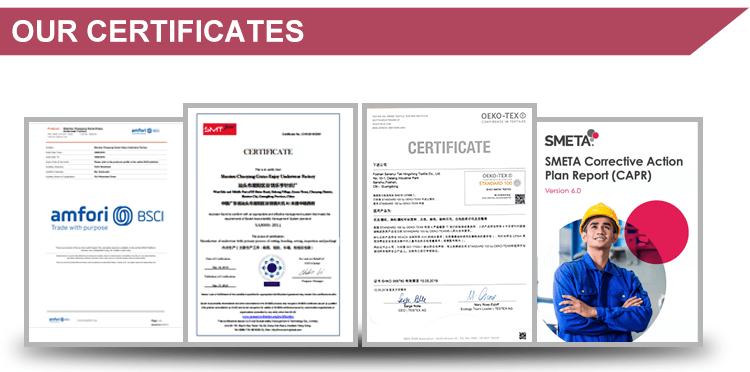
Diese Zertifizierungen stellen weit mehr als nur Papierkram dar. Nach meiner Erfahrung habe ich gesehen, wie diese Standards in realen Praktiken übereinstimmen. SA8000 bietet beispielsweise einen umfassenden Rahmen, der die Arbeitszeiten, die faire Vergütung und die Arbeitsplatzbedingungen befasst - alle kritischen Elemente in einer Branche, in der Arbeitspraktiken historisch problematisch waren.
Ich habe kürzlich einen Hersteller in Shantou besucht, der stark in ihren BSCI -Zertifizierungsprozess investiert hatte. Der Unterschied war unmittelbar nach dem Eintritt in ihre Einrichtung - klarer Ausgangsbeschilderung, ordnungsgemäße Belüftungssysteme, angemessene Beleuchtung bei Workstations und strukturierten Unterbrechungsplänen für Arbeitnehmer. Ihre Qualitätskontrollprozesse wurden akribisch dokumentiert, mit Qualitätskontrollpunkten in jeder Produktionsphase. Diese Organisation und das Engagement für Standards, die direkt auf ihre Produktkonsistenz und die Zufriedenheit der Arbeitnehmer geführt wurden. Ich habe festgestellt, dass Hersteller, die diese Zertifizierungen beibehalten, in der Regel um Mangelraten von 30 bis 40% niedriger sind als nicht zertifizierte Fabriken und signifikant höhere Raten des Arbeitnehmers, was die Produktqualität durch erfahrene Mitarbeiter weiter verbessert.
Wie bewerten ich die Produktionsfunktionen und Spezialisierung?
Als ich mit der Beschaffung aus China begann, machte ich den kostspieligen Fehler, dass alle Unterwäschhersteller ähnliche Fähigkeiten hatten. Die Realität könnte nicht unterschiedlicher sein.
Chinesische Unterwäsche -Hersteller sind häufig auf bestimmte Arten von intimen Bekleidung spezialisiert. Bewerten Sie ihre Kernfunktionen, indem Sie ihre Ausrüstung, das Fachwissen der Materialhandhabung, ihre Bautechniken und die früheren Produktionsbeispiele untersuchen. Fordern Sie die Proben von Produkten an, die Ihnen ähnlich sind, um Qualität und Handwerkskunst zu bewerten.
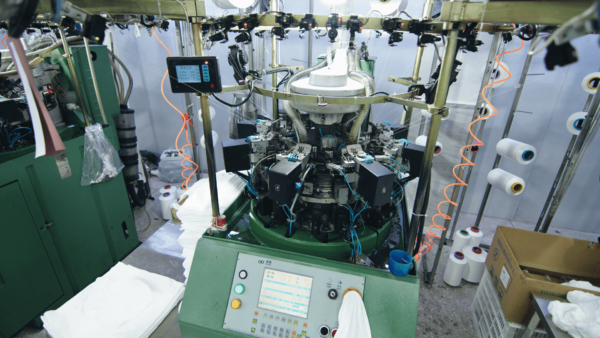
Ich habe durch Erfahrung gelernt, dass die Spezialisierung auf die Herstellung von Unterwäsche viel tiefer geht als nur Produktkategorien. Während meiner Fabrikbesuche in der Provinz Guangdong habe ich festgestellt, dass Hersteller dazu neigen, Fachkenntnisse in Bezug auf bestimmte Konstruktionstechniken, Materialien oder Produkttypen zu entwickeln. Zum Beispiel hat eine Fabrik, die ich in Shenzhen besucht habe, speziell bei Mold-Cup-BHs mit ihren spezialisierten Wärmeausrüstung und genau kalibrierten Kühlprozessen hervorragend ausgezeichnet, während ich mit Stretch-Spitzenanwendungen zu kämpfen hatte. Ein anderer in Dongguan hatte die nahtlose Technologie von Lasergeschnittenen perfektioniert, aber es fehlte die qualifizierte Arbeit für komplexe Drahtrahmenkonstruktionen.
Bei der Bewertung potenzieller Partner achte ich nun besondere Aufmerksamkeit auf ihre Maschineninventar- und Bedienerkenntnisse. Stimmt ihre Ausrüstungsaufstellung den technischen Anforderungen meiner Entwürfe überein? Haben sie in spezielle Maschinen für bestimmte Konstruktionsmethoden wie Bindung, nahtloses Stricken oder Multi-Nadel-Deckung investiert? Ich fordere auch detaillierte Informationen zu ihren materiellen Beschaffungskanälen an - etablierte Hersteller pflegen Beziehungen zu zuverlässigen Stoff- und Trim -Lieferanten, um eine konsistente Qualität und ethische Beschaffung sicherzustellen. Ich überprüfe auch ihre Stichprobenfunktionen auch, da die Fähigkeit eines Herstellers, Prototypen genau zu produzieren, typischerweise ihre Produktionsgenauigkeit widerspiegelt. Die aussagekräftigste Bewertung kommt aus der Untersuchung ihrer aktuellen Produktion - ich bitte nach Artikeln, die von ihren Linien stammen, die ähnliche Konstruktionstechniken wie meine geplanten Produkte erfordern.
Was soll ich während der Einrichtung eingehen?
Ich war überrascht von den starken Unterschieden zwischen Fabrikpräsentationen und operativen Realitäten. Wie können Sie die inszenierten Touren durchschneiden, um eine Einrichtung wirklich zu bewerten?
Untersuchen Sie während der Bewertung der Einrichtungen die Arbeitsbedingungen, die Qualität und Wartung der Ausrüstung, die Sauberkeit, die Organisation, die Moral der Arbeitnehmer und die Sicherheitsstandards. Schauen Sie über den Ausstellungsraum hinaus zu Produktionsbereichen, Räumen und Qualitätskontrollstationen. Unangekündigte Besuche bieten das genaueste Bild von Operationen.
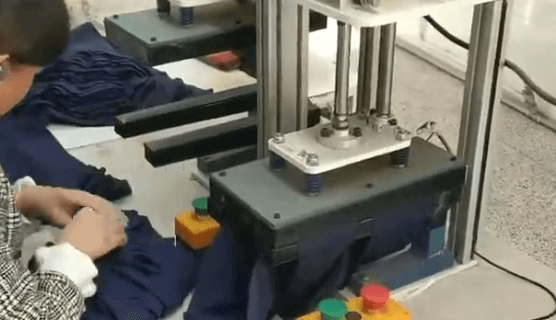
Ich habe über 50 Fabrikbewertungen in ganz China durchgeführt und einen methodischen Ansatz entwickelt, der über die Standard -Führung hinausgeht. Ich bitte immer, den gesamten Produktionsfluss zu sehen - vom Materialverlagern bis hin zum Schneiden, Nähen, Finishing, Qualitätskontrolle und Verpackung. Diese umfassende Sichtweise zeigt viel über die betriebliche Raffinesse eines Herstellers und die Liebe zum Detail. Bei einem unvergesslichen Besuch in einer Fabrik in der Nähe von Guangzhou bemerkte ich in ihren Showcase -Bereichen eine makellose Organisation, entdeckte jedoch die Ansammlung von Staub in ihren Sekundärproduktionsälen, was auf inkonsistente Wartungspraktiken hindeutet, die sich auf die Produktqualität auswirken könnten.
Die Interaktion der Arbeitnehmer ist ein weiterer wichtiger Bewertungsbereich. Ich beobachte, ob die Mitarbeiter gestresst erscheinen, ob sie einen angemessenen persönlichen Raum auf Workstations haben und ob sie die richtige Sicherheitsausrüstung verwenden. Ich habe gelernt, kleine Details wie ordnungsgemäße Beleuchtung, ergonomische Sitzplätze und Lüftungsqualität zu beachten - Faktoren, die sich direkt auf das Wohlbefinden der Arbeitnehmer und die Produktionsqualität auswirken. Wenn möglich, Besuche während der Mittagspause, um Einrichtungen und Mahlzeiten zu beobachten. Die Break -Bereiche erzählen oft eine ehrlichere Geschichte über die Behandlung von Arbeitern als jedes Zertifizierungsdokument. Ich empfehle auch, Unterkunftsanlagen für Fabriken zu überprüfen, die Wohnraum bieten, da die Lebensbedingungen die Zufriedenheit und -bindung von Arbeitern erheblich beeinflussen. Die Temperaturkontrolle ist besonders wichtig für die Unterwäscheproduktion, insbesondere für Elastik und Klebstoffe. Daher bestätige ich, dass Klimasysteme in den Produktionsbereichen konsistente Bedingungen aufrechterhalten.
Wie kann ich Qualitätskontrollprozesse überprüfen?
Jeder Hersteller verspricht Qualität, aber wie können Sie zwischen robusten Qualitätssystemen und leeren Zusicherungen unterscheiden?
Um Qualitätskontrollprozesse zu überprüfen, untersuchen Sie deren QC -Dokumentation, Defektverfolgungssysteme, Inspektionsmethoden, Stichprobenverfahren und Testprotokolle. Suchen Sie nach Inline-Inspektionen in mehreren Produktionsphasen, festgelegten AQL-Standards und klaren Verfahren zur Bewältigung von Qualitätsproblemen.
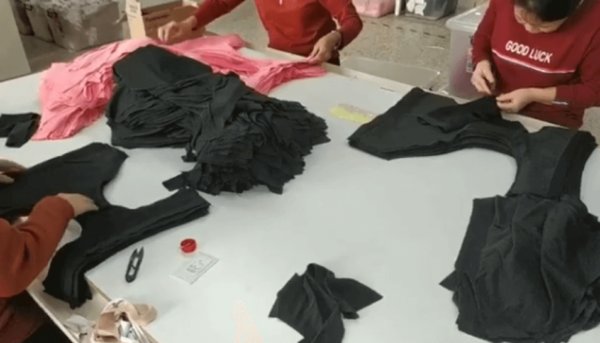
Meine Erfahrung hat gezeigt, dass die Qualitätskontrolle bei der Herstellung von Unterwäsche spezielle Prozesse erfordert, die über die Standardproduktion der Kleidungsstücke hinausgehen. Intime Bekleidung erfordert Präzision in der Größen-, konsistenten Elastizität und dem komfortorientierten Bau-Bereiche, in denen selbst kleine Abweichungen Produkte unerwünscht machen können. Ich habe einen systematischen Ansatz zur Bewertung der Qualitätskontrollfunktionen eines Herstellers entwickelt, der meinen Kunden unzählige Stunden und Ressourcen gespart hat.
Zuerst untersuche ich ihre Inspektionspunkte während der gesamten Produktion. Führende Hersteller implementieren mindestens fünf kritische Kontrollpunkte: Materialinspektion vor dem Schneiden nach dem Schneiden, vor dem Nähen, beim Nähen (Inline-Inspektion), nach Abschluss jedes Stücks und endgültige zufällige Stichproben unter Verwendung von AQL-Standards (akzeptable Qualitätsgrenze). Ich fordere die Dokumentation ihrer QC -Verfahren an und frage nach tatsächlichen Inspektionsunterlagen, die sowohl ihre Methodik als auch die Transparenz enthüllen. Ich bewertete auch ihr Defekt -Klassifizierungssystem - wie sie kleinere, Haupt- und Kritische Defekte kategorisieren und angehen, spricht Bände über ihre Qualitätsprioritäten. Ein weiteres entscheidendes Element sind ihre Materialtestprotokolle für Farbhaftigkeit, Elastizitätsretention und Wäschedauer. Ein Hersteller, mit dem ich in Shantou zusammengearbeitet hatte, hatte in ein Labor vor Ort investiert, um vorläufige Tests zu testen, was ihre Qualitätsprobleme im Zusammenhang mit Stoff drastisch reduzierte. Schließlich beurteile ich ihre Feedback -Schleife - wie Qualitätsprobleme die Prozessverbesserungen beeinflussen. Die zuverlässigsten Partner behalten detaillierte Aufzeichnungen über vergangene Qualitätsprobleme und die implementierten Korrekturmaßnahmen bei, wodurch ein Engagement für kontinuierliche Verbesserungen nachgewiesen wird, anstatt nur Mindeststandards zu erfüllen.
Warum ist die Erfahrung und Referenzen der Branche wichtig?
In meinen frühen Beschaffungstagen unterbewertete ich die Bedeutung der Herstellergeschichte und der Kundenbeziehungen. Was macht diese Faktoren entscheidende Indikatoren für die Zuverlässigkeit?
Branchenerfahrung und Referenzen bieten Einblicke in die Stabilität, die Fähigkeiten zur Problemlösung und die Kundenzufriedenheit eines Herstellers. Suchen Sie nach Herstellern mit mindestens 5 bis 10 Jahren in der Unterwäscheproduktion, fordern Sie Kundenreferenzen aus ähnlichen Produktkategorien an und erkundigen Sie sich nach langfristigen Markenbeziehungen.
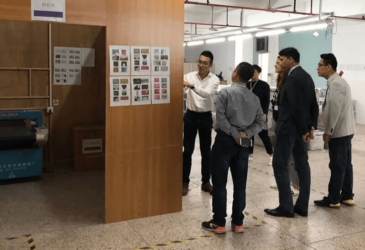
In meinen Jahren in der intimen Bekleidungsindustrie habe ich festgestellt, dass die zuverlässigsten Hersteller ein gemeinsames Merkmal haben: Langlebigkeit, gepaart mit kontinuierlicher Verbesserung. Die Herstellung von Unterwäsche stellt einzigartige Herausforderungen dar, die nur Erfahrung effektiv angehen kann. Wenn ich den Industriehintergrund eines Herstellers bewertete, schaue ich über einfache Unternehmen hinaus, um ihre Entwicklung und Spezialisierungsreise zu verstehen. Eine Fabrik, die seit mehr als 15 Jahren intime Bekleidung von Frauen produziert, ist wahrscheinlich unzählige Konstruktionsherausforderungen, materielle Leistungsprobleme und Inkonsistenzen, die neuere Operationen immer noch entdecken.
Reference checking has become one of my most valuable assessment tools. I specifically request references from brands producing similar product types at comparable volume levels. The questions I ask these references go beyond general satisfaction to specific performance metrics: How consistent is sizing across production runs? How effectively does the manufacturer communicate production challenges? What is their on-time delivery rate? How do they handle quality issues when they arise? One particularly revealing question I always include: "How has the manufacturer improved their processes during your partnership?" Die Antworten geben Einblicke in ihr Engagement für den Aufstieg und nicht in die Selbstzufriedenheit. Ich habe festgestellt, dass Hersteller, die über 5 Jahre lang Partnerschaften mit etablierten Marken unterhalten, in der Regel überlegene Fähigkeiten zur Problemlösung und die Transparenz der Kommunikation zeigen. Während einer kürzlichen Fabrikbewertung stellte ich fest, dass ein Hersteller seit über sieben Jahren Beziehungen zu drei großen europäischen Marken aufrechterhalten hatte-dieser langfristige Erfolg mit anspruchsvollen Kunden erwies sich letztendlich als wertvoller als ihre beeindruckende Ausrüstung.
Wie wichtig ist Kommunikation und Transparenz?
Eine schlechte Kommunikation hat mehr Produktionspartnerschaften entgleist als ich zählen kann. Welche Kommunikationsstandards sollten Marken von zuverlässigen Herstellern erwarten?
Effektive Kommunikation und Transparenz sind grundlegend für erfolgreiche Fertigungspartnerschaften. Bewerten Sie die Reaktionszeiten, die Englischkenntnisse der wichtigsten Mitarbeiter, die Klarheit der Dokumentation, die Bereitschaft, Herausforderungen und Kommunikationssysteme für Produktionsaktualisierungen und Problemlösung anzuerkennen.

Durch die Verwaltung der Produktion in mehreren chinesischen Fabriken habe ich gelernt, dass Kommunikationsfähigkeit genauso wichtig ist wie die technische Fähigkeit zur Bestimmung der Partnerschaftserfolg. Der Unterwäsche -Herstellungsprozess umfasst zahlreiche technische Entscheidungen und Anpassungen, die einen klaren, rechtzeitigen Austausch zwischen Marken- und Herstellervertretern erfordern. Ich beurteile das Kommunikationspotenzial aus der ersten Interaktion, stelle die Reaktionszeiten, das Verständnis der technischen Anforderungen und die Bereitschaft, klärende Fragen zu stellen, anstatt Annahmen zu treffen.
Die Sprachkenntnisse bleiben trotz technologischer Fortschritte bei der Übersetzung eine erhebliche Überlegung. Ich suche nach Herstellern mit Account -Managern, die starke Englischkenntnisse demonstrieren, insbesondere in Bezug auf die technische Terminologie, die für intime Bekleidungskonstruktionen spezifisch ist. Die Klarheit der Dokumentation ist gleichermaßen wichtig - detaillierte Zitate, umfassende Produktionszeitpläne und strukturierte Qualitätsberichte weisen auf organisierte interne Kommunikationssysteme hin. Ich bewerten auch die Transparenz in Bezug auf Fähigkeiten und Einschränkungen. Die zuverlässigsten Partner, mit denen ich offen zusammengearbeitet habe, diskutieren Bereiche, in denen sie sich hervorheben und in denen sie vor Herausforderungen stehen, anstatt zu überverpressen. Während der Produktion werden Kommunikationssysteme kritisch. Ich bevorzuge Hersteller, die regelmäßige Produktionsaktualisierungen mit unterstützender visueller Dokumentation anbieten und Protokolle für frühzeitige potenzielle Probleme festgelegt haben. Ein Hersteller, mit dem ich in Guangdong zusammengearbeitet habe, hat ein digitales Produktions -Tracking -System implementiert, mit dem Marken den Fortschritt durch wichtige Produktionsphasen mit Inspektionsberichten und Dokumentation zur Auflösung des Problems überwachen können. Diese Kommunikationstransparenz hat praktisch die Überraschungsverzögerungen und Qualitätsprobleme beseitigt, die häufig die Produktionszeitpläne plagen.
Was sollte ich über Produktionskapazität und Vorlaufzeiten wissen?
Unrealistische Erwartungen an die Produktionskapazität und das Timing haben für Marken unzählige Kopfschmerzen verursacht. Welche Faktoren bestimmen die realistische Produktionsplanung?
Das Verständnis der Produktionskapazität und der Führungszeiten hilft bei realistischen Erwartungen. Überprüfen Sie die monatliche Produktionskapazität, Mindestbestellmengen (MOQS), saisonale Kapazitätsschwankungen, Produktionsplanungssysteme und Standard -Vorlaufzeiten für die Probenahme und Massenproduktion. Faktor für Zeitpläne für Materialbeschaffung und mögliche Verzögerung.
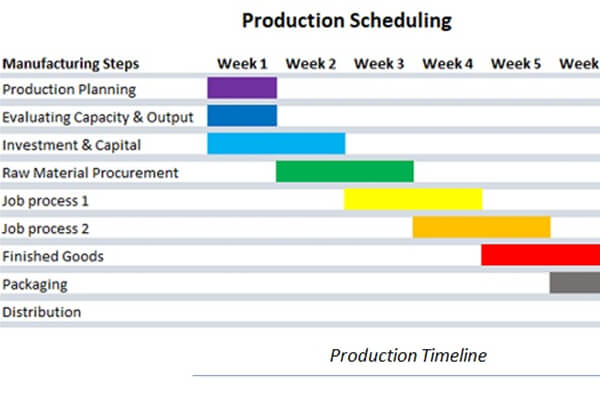
In meinen Jahren zur Überwachung der Produktionsplanung für intime Bekleidungsmarken habe ich einen detaillierten Ansatz zur Bewertung der Kapazitätsansprüche der Hersteller entwickelt. Viele Fabriken präsentieren ihre theoretische maximale Leistung, dies spiegelt jedoch selten eine nachhaltige, qualitätsorientierte Produktionsrealität wider. Ich beurteile die Kapazität durch mehrere Objektive: Maschinenzahl und Typ, Arbeitnehmernummern und Qualifikationsstufen, Produktionslinienorganisation und historische Ausgabeaufzeichnungen. Bei der Herstellung von Unterwäsche sehe ich ihre Kapazität für verschiedene Konstruktionstypen-Cut-and-Sew-Operationen gegenüber geformten Produkten, beispielsweise unterschiedliche Geräte und Prozesse mit unterschiedlichen Ausgangsraten an.
Mindestbestellmengen zeigen viel über den betrieblichen Fokus eines Herstellers. Herkömmliche groß angelegte Hersteller setzen MOQs in der Regel auf 1.000 Stück pro Stil/Farbe, während flexiblere Vorgänge möglicherweise 300-500-teilige Minimums zu geringfügig höheren Kosten bieten. Das Verständnis dieser Parameter ist für Marken in verschiedenen Wachstumsphasen von entscheidender Bedeutung. Die Bewertung der Vorlaufzeit erfordert, dass über die Standard -Produktionszeiträume des gesamten Prozesses hinausgeht, einschließlich der materiellen Beschaffung (besonders wichtig für spezialisierte Stoffe und Zähne, die in Unterwäsche üblich sind), Iterationen der Probenentwicklung, der Massenproduktion, der Qualitätskontrolle und der Versandlogistik. Ich diskutiere immer saisonale Kapazitätsschwankungen-viele chinesische Hersteller haben eine reduzierte Kapazität in Bezug auf das chinesische Neujahr und andere wichtige Feiertage, während er in den Spitzenproduktionssaisonen potenziellen Engpässen ausgesetzt ist (in der Regel im Juli bis Oktober für den Einzelhandelsinventar in Urlaub). Die zuverlässigsten Partner behalten ausgefeilte Produktionsplanungssysteme bei, die diese Variablen berücksichtigen und realistische Zeitpläne und nicht optimistische Schätzungen liefern. Ich habe kürzlich eine Einrichtung in Shantou auf Tour gemacht, in der digitale Produktionsverfolgung in allen Abteilungen implementiert wurde, wodurch sie genaue Daten zur Kapazitätsauslastung ermöglichten, die genaue Zustellungsverpflichtungen ermöglichten - ein Maß an Raffinesse, das die Enttäuschungen der Timeline erheblich verringert.
Abschluss
Die Identifizierung zuverlässiger und ethischer Unterwäschehersteller in China erfordert eine systematische Bewertung von Zertifizierungen, Produktionsfunktionen, Einrichtungsbedingungen, Qualitätskontrollprozessen, Erfahrung, Kommunikation und Kapazität. Durch eine gründliche Bewertung dieser Faktoren können Marken erfolgreiche Fertigungspartnerschaften aufbauen.
Holen Sie sich ein kostenloses Angebot für Ihre Unterwäscheprojekte
